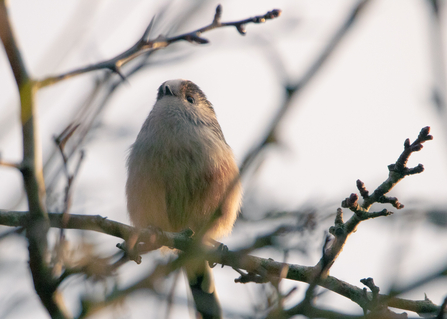Winter can be a great time to go bird watching. Wetlands see more ducks and waders arrive, whilst our hedgerows are filled with various chattery thrushes gorging themselves on berries as they visit the UK for the winter. Leafless trees also make these birds easier to spot.
There are many reasons to get into birdwatching. Firstly, unlike most wild animals, you are highly likely to see birds. Wherever you go outdoors, the garden, the park, the coast, the city centre, if you keep your eyes (and ears) open, you will be able to see birds. Whereas, if you wanted to go mammal watching, you are going to have to settle with the occasional pawprint in the mud or, if you are really lucky, a poo.
Secondly, birds fly! You can admire these animals soaring overhead with a combined sense of fascination, joy and slight envy.
Thirdly, with over 600 species of bird visiting the UK there are plenty to learn and try to spot with new ones visiting at different times of the year. If you wanted to, you could learn every species of British reptile and amphibian in a single morning. Birds, however, will keep you learning and excited for a long time to come.
Finally, bird watching is good for you! By putting on your wellies, grabbing your binoculars and heading outside not only are you improving your physical health but your wellbeing will also get a much needed boost. By going looking for birds, you actively engage with most of the five ways to wellbeing as recommended by the NHS (pay attention, connect, be active, give and learn).
So what can you look out for this winter?
Keep your eyes open for the “feathered lollipops”! Long-tailed tits gather in large extended family groups over the winter to help avoid predation and huddle together at night to keep warm. As these adorable black and white fluff balls flutter along the hedgerow they might be joined by other tits, such as blue tits or great tits.
Look for berries, as these will attract birds in from far and wide. Winter visitors from Scandinavia will come to the UK to enjoy our milder winter and gorge on nature’s beautiful berry bounty. Redwings are stunning, blackbird-sized birds with red armpits and a bright stripe above their eyes who can gather in large flocks to feast on rowan and hawthorn berries. These can be joined by other visitors such as Fieldfares, larger thrushes with grey heads and speckled chests like a song thrush.
I am also hoping to see my first waxwing this winter! These starling-sized stunners with peachy coloured heads can visit the UK if the berry crop in Scandinavia is particularly poor.
This year, help beat the winter blues with some binoculars. Head outside and let us know what birds you spot on your adventures. Remember to put feed and water in your garden to help our garden birds and if you want to learn more, why not visit one of our reserves or see what events we have on? Happy birding! You can find out more about visiting our reserves here or our winter events here.


